
M/S Station
Advanced M/S tool
- Parallel insert with M/S function.
- Independent, stepped Mid and Side blend controls.
- Elliptical EQ (low end mono-maker).
- Width control from mono to extra wide.
- Advanced cue function for monitoring at nearly every step in its path.
The M/S Station is a multi-function mastering and main bus processing tool.
It’s designed to cover all the needs of every producer/engineer who wants to maximize their use of mid-side processing for enhanced stereo width; tight, focused mono-bass, and more. Its four discrete functions are divided across two linkable control sections for intuitive use, and its advanced cue section makes monitoring a breeze

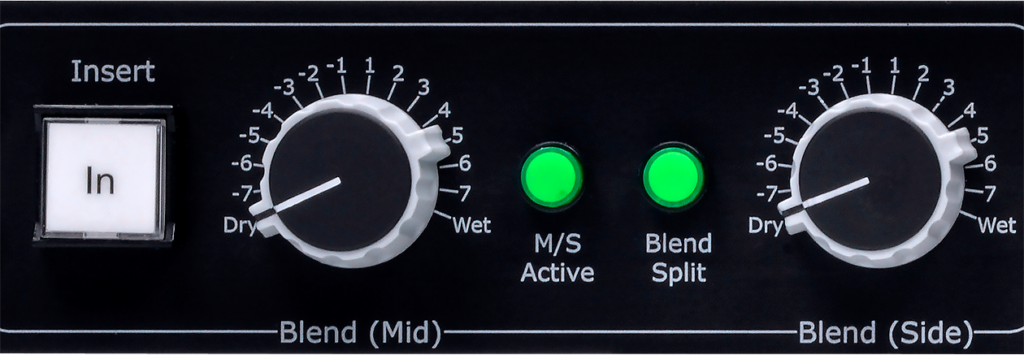
Parallel insert with M/S function: With the insert section you can insert an external processor like an eq, compressor, distortion unit etc, and then dial in a mix between the processed signal (wet) and the unprocessed signal (dry). For maximum precision the blend control has 16 steps from dry to wet. If you activate the M/S function your signal will be coded into mid (L+R) and side (L-R). The mid signal normally contains all the center info such as bass, kick drum, lead vocal etc and the side signal contains all the panned parts of the signal. In M/S you can process the center signal and side signal separately with different types of processors. With the blend split function you get separate blend controls for the mid and side signal. In M/S mode the blend function takes place before the signal is decoded back to left/right. This section can be used with it’s own balanced inputs and outputs.
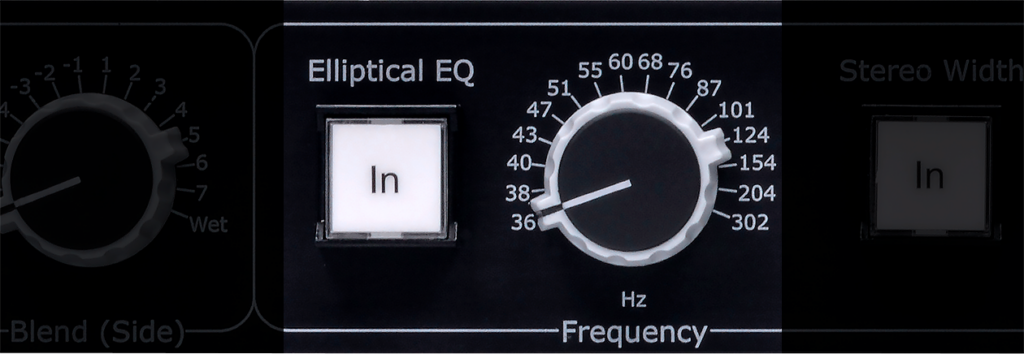
Elliptical Equalizer: With the elliptical EQ all frequencies below a selected frequency will be made to mono. This function can make your low end more focused. It’s an old technique used when mastering for vinyl. Too much low end in the side channel (vertical) can make the needle bounce slightly and cause distortion. By using a 12dB high pass filter in the side channel you set the frequency under which the signal will be processed as mono. As a HPF introduces phase shift to the signal, a phase correction is added to the mid channel keeping channel separation as good as possible. The EEQ has 16 frequencies from 36Hz to 302Hz. With the EEQ cue function you can monitor the signals that are mixed between the channels.
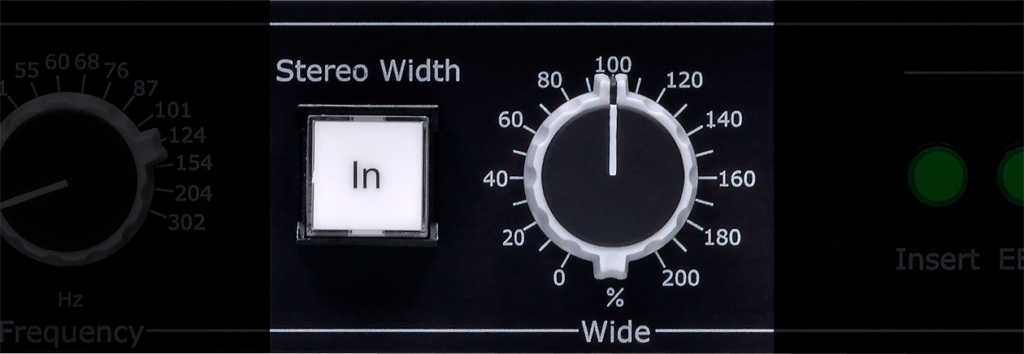
Stereo width control: By adjusting the amount of side information in the stereo mix, the width can be adjusted incrementally from mono to extra wide. With this control you can fine adjust the stereo image after you have used the M/S insert.
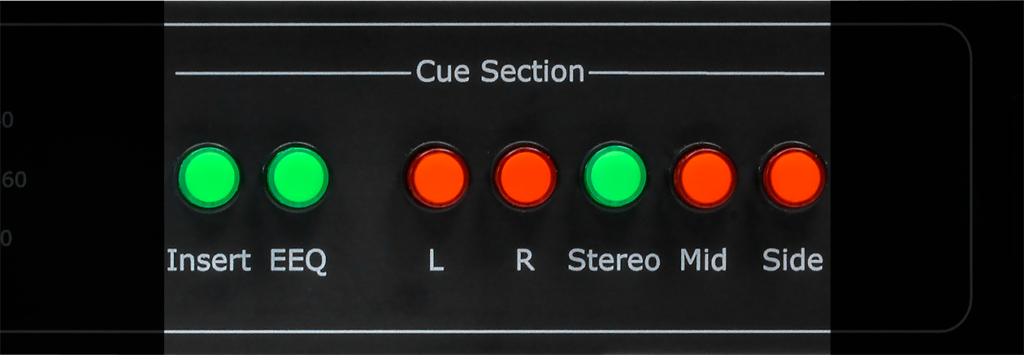
Cue function: With the cue function you can monitor the Left, Right, Mid or Side signal separately by pressing the dedicated button.
Insert cue is a function to monitor the Mid or Side blend separately when the M/S function and Split blend is active. The signal is then sent directly from each blend control directly to the outputs, one at a time without passing the EEQ, Width or other gear if the M/S Station is used unlinked.
By selecting the EEQ switch on the cue section you can monitor the low frequencies fed from left to right or right to left. The cue section is a passive design using relays to select the cue source.
”The M/S Station unlocks the full potential of my vintage TAB W395a EQs for mastering. Being able to use these in mid/side and blended in to taste is fantastic! As if that wasn’t enough, the elliptical EQ section sounds great, and the stereo width control is handy if adjustments are needed after the previous M/S processing”
Fredrik Kinbom, Madame Vega’s Boudoir – Berlin
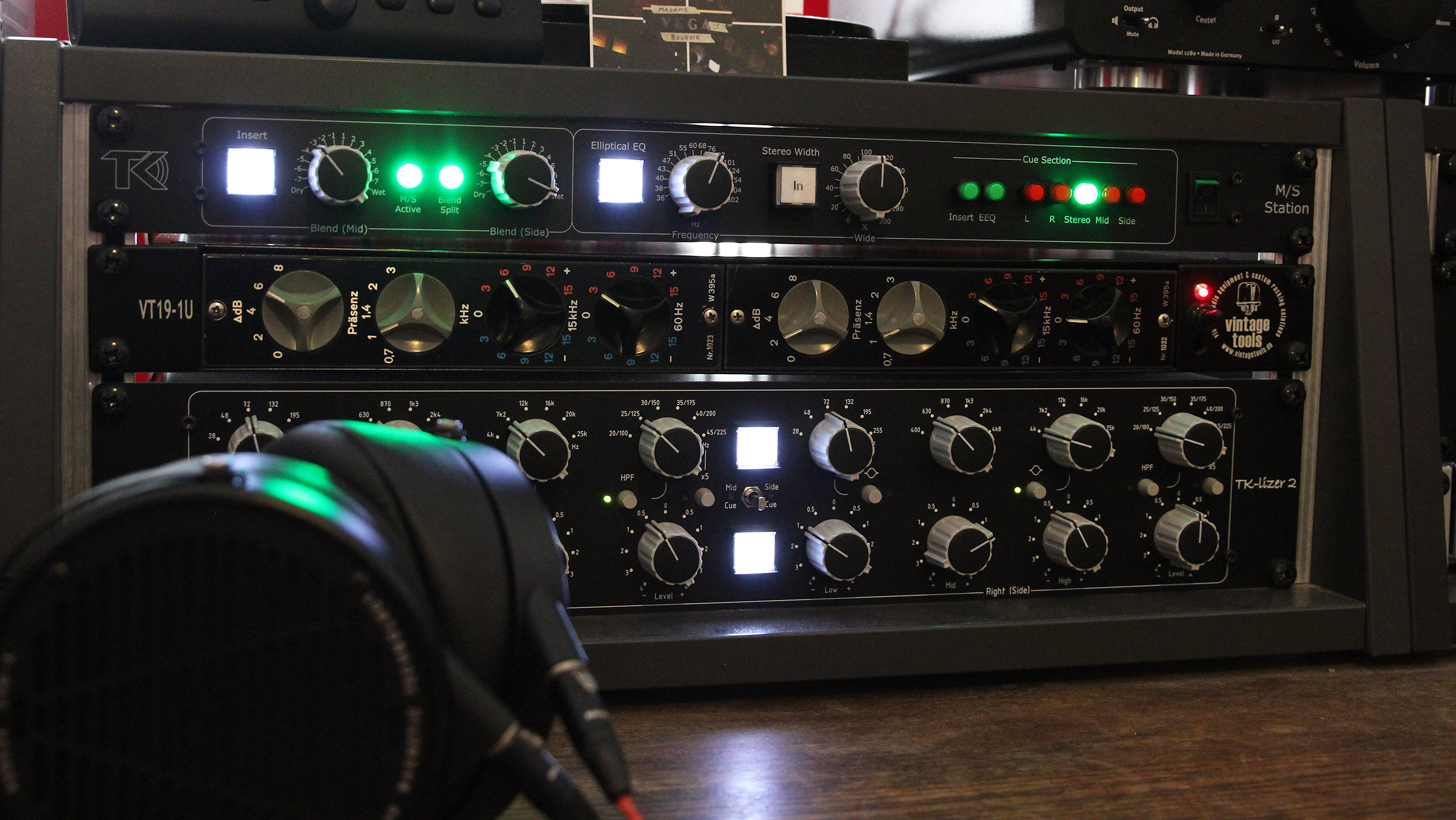

The M/S Station has four tools divided into two sections. Section 1 is a parallel insert with M/S function, section 2 consists of three parts, an elliptical EQ, a width control and an advanced cue function.
The two sections are normaly linked but if you want to use the sections at different positions in your signal chain you can unlink them by removing four jumpers inside. This way you can use the insert section earlier in your chain and the EEQ/Width/cue section last in you chain. The insert cue function can still be used even if the sections are unlinked.
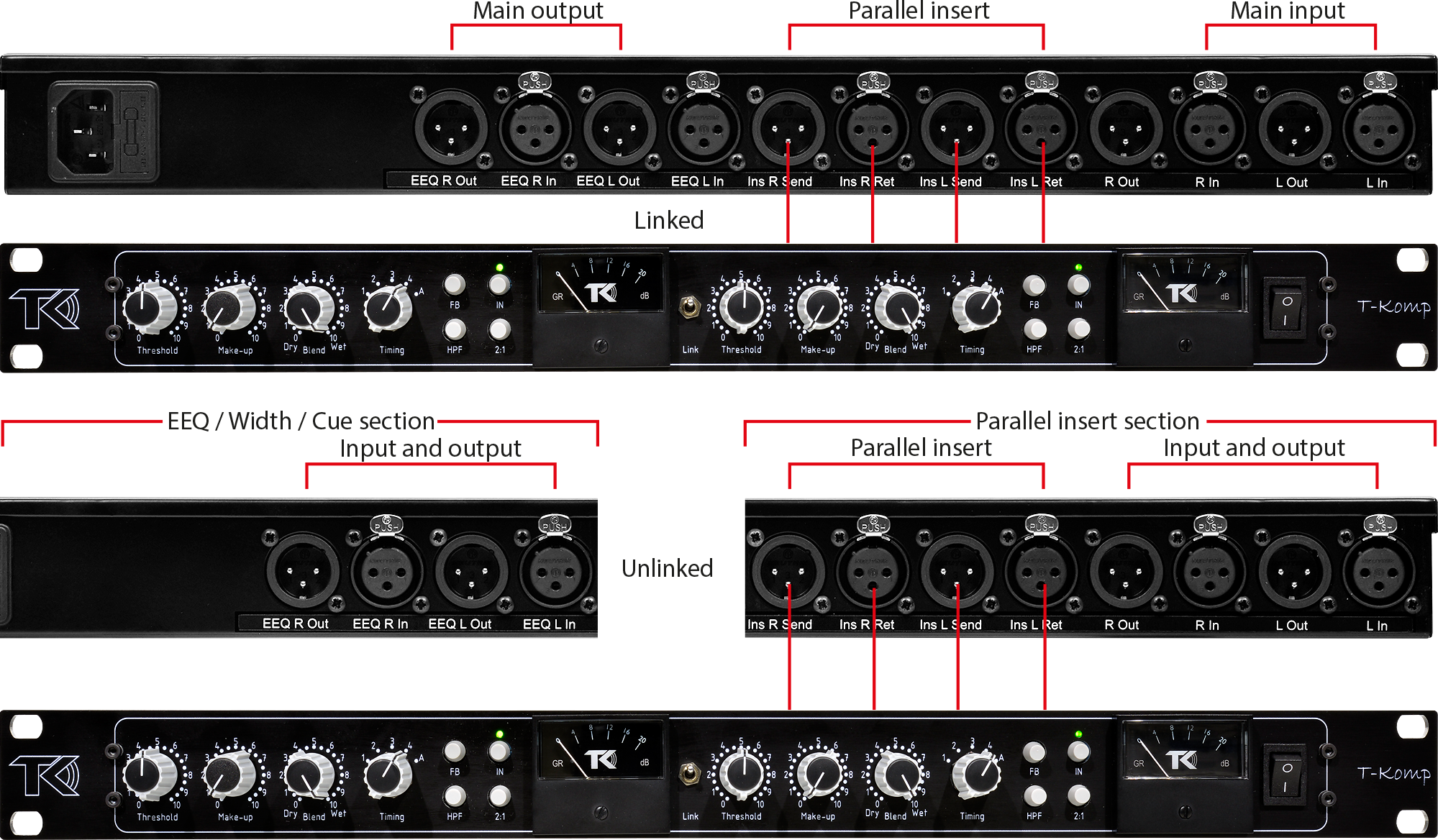
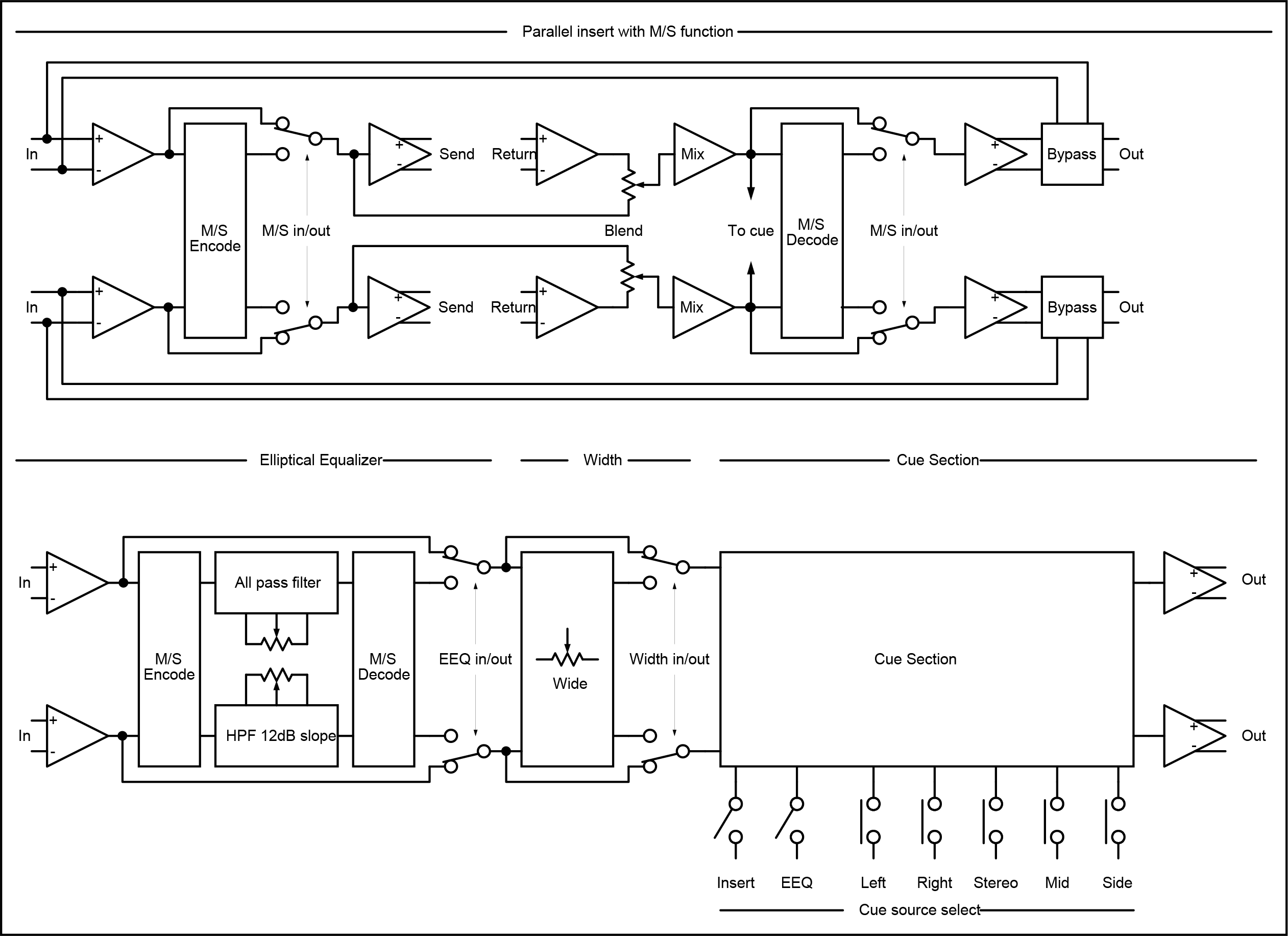

Specifications
Max input and output +26dBu
Dynamic range 119dB
Frequency response: 20Hz – 80kHz +/-0,1dB
Insert section
THD+N Dry 0,00022% @ +4dBu / 0,00015% @ +20dBu
THD+N Wet 0,00025% @ +4dBu / 0,00015% @ +20dBu
THD+N M/S Wet 0,0004% @ +4dBu / 0,0004% @ +20dBu
S/N Dry @ +4dBu 103dB
S/N Wet @ +4dBu 102dB
S/N M/S Wet @ +4dBu 97dB
Elliptical EQ section
THD+N 0,0004% @ +4dBu / 0,0004% @ +20dBu
S/N 98dB
Crosstalk Better than 70dB
Width section
THD+N 0,0003% @ +4dBu / 0,0003% @ +20dBu
S/N 98dB
All sections active
Dynamic range 115,5dB
THD+N 0,0005%
Power consumption: 15VA
Voltage: 115v or 230v selected via an internal volt selector switch.
Inspired by circuits designed by Wayne Kirkwood (used by permission)
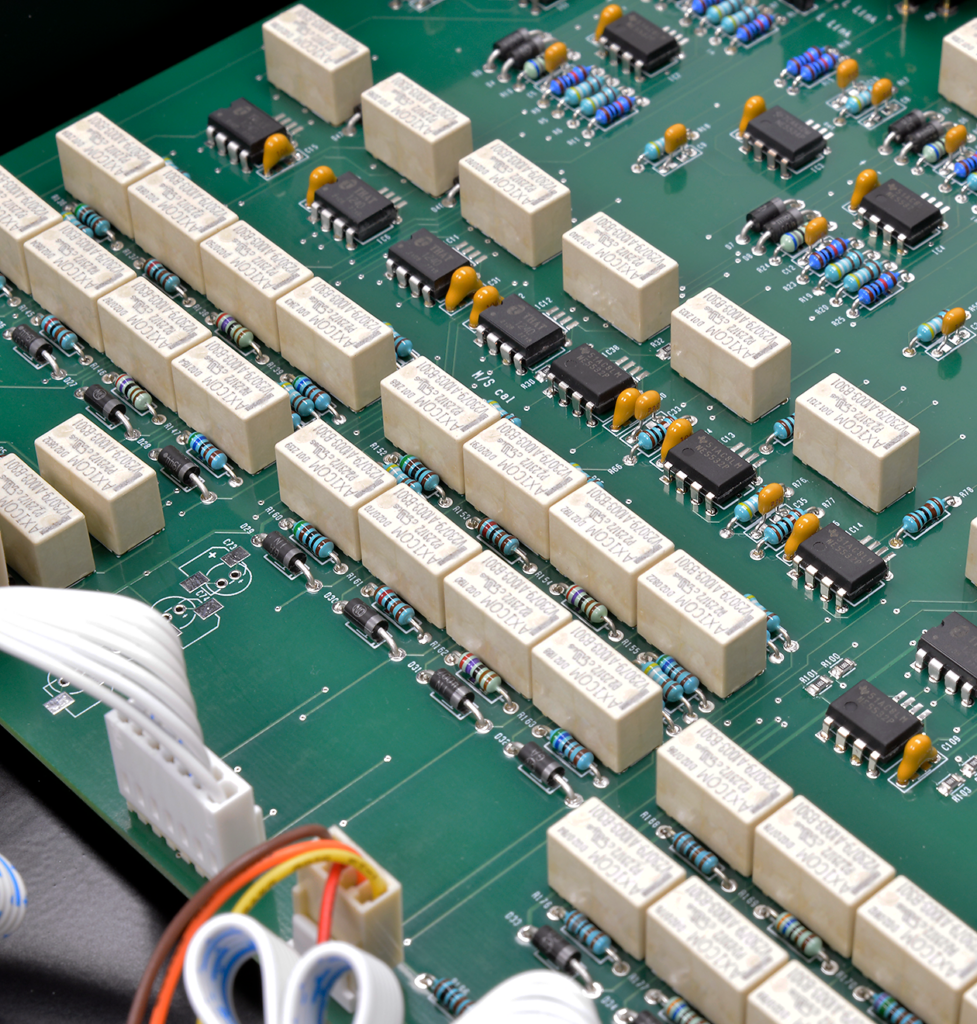
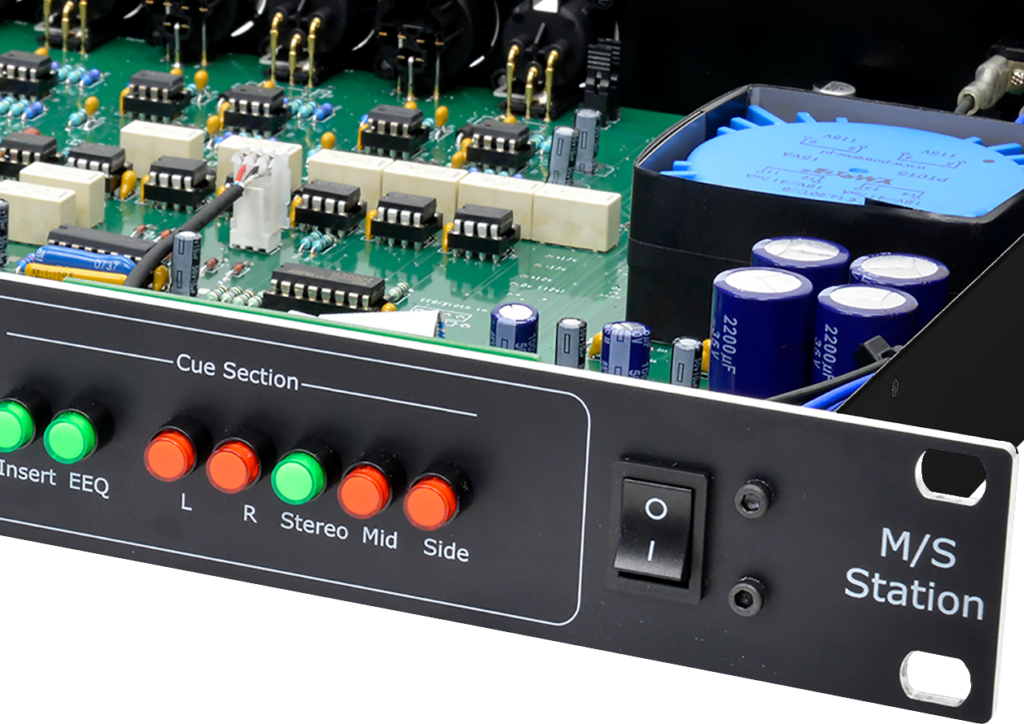
Features
Parallel insert
Insert In/Out
Stepped blend controls (16 steps)
M/S function
Blend split for separate blends for Mid and Side
Elliptical EQ
EEQ In/Out
Frequencies: 36Hz,38Hz, 40Hz, 43Hz, 47Hz, 51Hz, 55Hz, 60Hz, 68Hz, 76Hz, 87Hz, 101Hz, 124Hz, 154Hz,204Hz, 302Hz
Width control
Width In/out
Wide from mono to 200% in 41 steps (detented potentiometer)
Cue Section
Left, Right, Stereo, Mid, Side, Insert cue, EEQ cue
Specifications and components may be changed or updated without further notice.